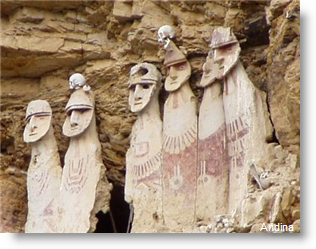
Posted on 12/12/2013 11:08:52 AM PST by Theoria
Bishop Museum's Dr. Mulrooney conducted 6-year study on Rapa Nui
Bishop Museum's assistant anthropologist, Dr. Mara Mulrooney, conducted a six-year study on Rapa Nui, also known as Easter Island, about the island's theoretical civilization collapse.
Results from her groundbreaking doctoral dissertation entitled "Continuity or Collapse? Diachronic Settlement and Land Use in Hanga Ho'onu, Rapa Nui (Easter Island)" are outlined in an article published in the December issue of the Journal of Archaeological Science. This new evidence debunks previous theories that the islanders "self-destructed" before Europeans first visited in 1722.
As popularized in Jared Diamond's 2005 book Collapse, Rapa Nui is often viewed as a prime example of what happens when people lose sight of what they are doing to their environment. According to the popular narrative, the Rapa Nui people committed "environmental suicide" by deforesting their island home. But, new evidence collected by Dr. Mulrooney and colleagues is challenging that story.
"The new picture that emerges from these results is really one of sustainability and continuity rather than collapse, which sheds new light on what we can really learn from Rapa Nui," said Mulrooney. "Based on these new findings, perhaps Rapa Nui should be the poster-child of how human ingenuity can result in success, rather than failure."
Dr. Mulrooney analyzed over 300 radiocarbon dates from across the island, including 15 dates from new excavations in the northern area of the island. These new findings, along with the re-analysis of previously collected dates, showed that large tracts of Rapa Nui's interior continued to be used for agricultural production of foods like sweet potatoes and taro, even after European contact with the island. This directly challenges the previous belief that these areas were abandoned as the island chiefdom supposedly collapsed.
These results, together with recent results from Dr. Mulrooney’s colleagues Thegn Ladefoged, Ph.D. (University of Auckland), Christopher Stevenson, Ph.D. (Virginia Commonwealth University), and Sonia Haoa (an archaeologist from Rapa Nui), who have been analyzing the ancient gardens of the island, suggest that the Rapa Nui people managed to transform their island home into a more productive and sustainable environment. These new findings suggest that it was not until the fatal impacts of European contact in the 18th century that Rapa Nui society experienced a real societal collapse due to introduced diseases.
Thanks. I think I have at least one Easter Island documentary on my PC. I’ll see if he’s in it. I’m sure YouTube has plenty of other docs too.
Yes, it was the White man’s fault.
Again.
Of course.
Yeah, no doubt. Seeing those beautiful locations would be incredible.
Okay, I can see that. They would have survived if they had.....a really nice train.....and tariffs.
iirc, the natives told Heyerdahl the statues walked by themselves. Your illustration shows they were correct. And not a single tree was cut down in the process.
I actually read Jared book “Collapse” .... I thought his analysis about Easter Island was rather lame....
In his closing arguments at the end of the book........ He says ....
You guessed it....
Global warming is the likely cause of future civilization collapsing....

I’ve never seen that National Geo doc before, but it does look as though they are rocking it back and forth in a walking manner.
If I had groups of people trying to pull my head off from three different directions, I’d want a blindfold too.
I saw that event as part of a program on East Island, they did indeed rock the statue from side to side, and it ‘walked’ just as the natives described to Heyerdahl.
There’s a pdf showing the network or roads constructed for statue transportation:
http://www.csulb.edu/~clipo/papers/LipoAndHunt-2005.pdf
Easter Island, not East Island. Silly me.
Thanks. I’ll take a look.
Pretty interesting. No different than how we would walk a refrigerator with two people.
One of the cooler things was how the 'locals' said how the statues walked, from oral tradition. Took some years, but the scientist finally paid attention.
It’s pretty much how I moved large heavy by myself when I moved to my new apartment. :)
Disclaimer: Opinions posted on Free Republic are those of the individual posters and do not necessarily represent the opinion of Free Republic or its management. All materials posted herein are protected by copyright law and the exemption for fair use of copyrighted works.